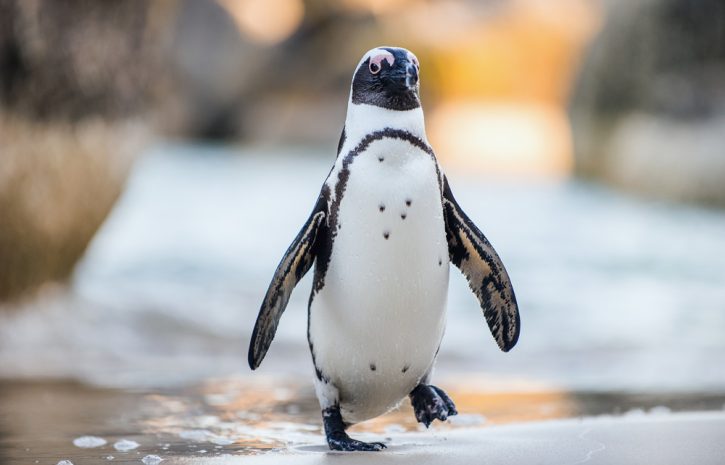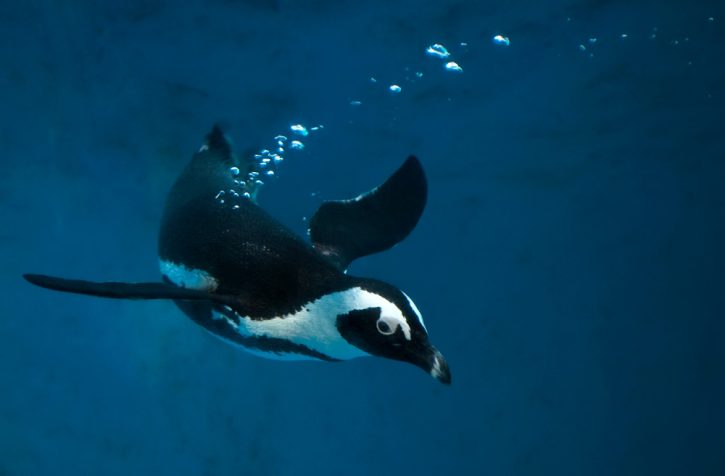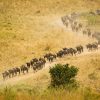
African penguins live in colonies on the coast and islands of southern Africa. Also called jackass penguins, African penguins make donkey-like braying sounds to communicate.
However, there is one species of penguins that is acclimated to warmer climates, the African Penguin.
The African penguin averages about 60 cm (2 ft.) tall and weighs up to 3.6 kg (8 lb.).
Their short tails and flipper-like wings that help them navigate in the water, while their webbed feet help propel them.
They Have Waterproof Feathers

African penguins can dive under water for up to 2.5 minutes. To keep dry and insulated in cold water, African penguins are covered in dense, waterproof feathers.
These feathers are white on the belly and black on the back, which aids in camouflage.
What They Eat
African penguins primarily hunt small fish such as anchovies and sardines. They may also eat squid and crustaceans.
How African Penguins Reproduce
African penguins breed within their colonies. They do not travel to different nesting grounds like some other penguin species.
Ideally, African penguins nest in burrows they dig out of their own poop, called guano. Their guano is sturdy enough to protect the eggs from the elements, but soft enough to burrow into.
However, recent removal of the guano for fertilizer has forced African penguins to change their habits and nest primarily under bushes and boulders. Sometimes they also lay their eggs out in the open, but then the eggs not protected from predators like cats and seagulls.
Eggs are laid in pairs and both parents help incubate them. Both parents also feed the newly-born chicks.
After 2-4 years, the chicks will mature and lay their own eggs.
African penguins can live for an average of 10-15 years, however many do not reach their full life span, and populations have been steadily decreasing.
Conservation Status
The loss of nesting places due to guano removal has contributed to the population decline as well as a decrease of food due to over-fishing and pollution.
As such, African penguins are now considered endangered by IUCN’s Red List. This means there is a high risk they may become extinct.



